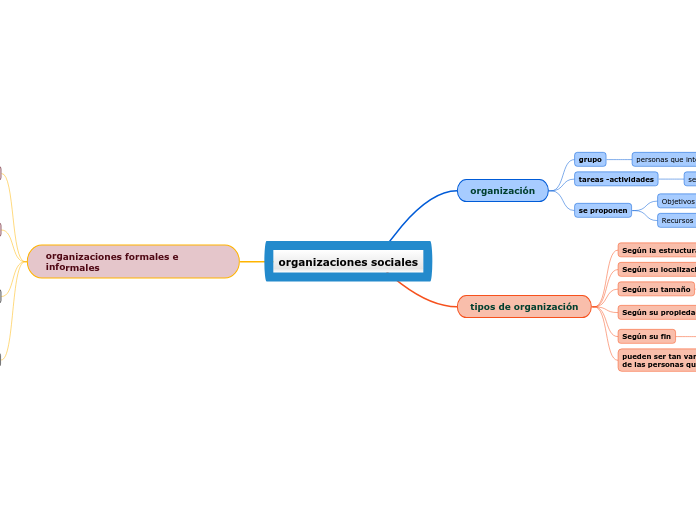organizaciones sociales
In physics, energy is the quantitative property that must be transferred to an object in order to perform work on, or to heat, the object. Energy is a conserved quantity; the law of conservation of energy states that energy can be converted in form, but not created or destroyed
organizaciones formales e informales
surgen
Nuclear energy originates from the splitting of uranium atoms – a process called fission.
This generates heat to produce steam, which is used by a turbine generator to generate electricity. Because nuclear power plants do not burn fuel, they do not produce greenhouse gas emissions.
Write down the advantages and disadvantages of Nuclear Energy.
necesidades sociales
necesidades personales
informales
A wind turbine, or alternatively referred to as a wind energy converter, is a device that converts the wind's kinetic energy into electrical energy.
Wind turbines are manufactured in a wide range of vertical and horizontal axis.
Write down the advantages and disadvantages of Wind turbines.
no planificadas
interacciones sociales no oficiales
intereses comunes
espontánea
políticas pre definidas
Solar energy begins with the sun. Solar panels are used to convert light from the sun, which is composed of particles of energy called 'photons', into electricity that can be used to power electrical loads.
Write down the benefits of using solar panels.
cronogramas
programas
planes
procedimientos
formales
Hydrogen fuel is a zero-emission fuel burned with oxygen.
It can be used in fuel cells or internal combustion engines.
Name the advantages and disadvantages of Hydrogen fuel.
normas de funcionamiento
estructura jerárquica
planificada
tipos de organización
There are many different types of energy, which all fall into two primary forms – kinetic and potential.
Energy can transform from one type to another, but it can never be destroyed or created.
pueden ser tan variadas como los intereses de las personas que las componen.
Gravitational energy is a form of potential energy.
It is energy associated with gravity or gravitational force, in other words, the energy held by an object when it is in a high position compared to a lower position.
Give examples.
Según su fin
Electrical energy is the movement of electrons, the tiny particles that make up atoms, along with protons and neutrons.
Electrons that move through a wire are called electricity.
Give another example of electrical energy.
Pueden ser con o sin fines de lucro
Según su propiedad
Chemical energy is stored in the bonds of atoms and molecules.
It is the energy that holds these particles together.
Stored chemical energy is found in food, natural gas, etc.
Give more examples.
propiedad pública (del Estado o gobierno) o privada
Según su tamaño
Nuclear energy is stored in the nucleus of atoms.
This energy is released when the nuclei are combined (fusion) or split apart (fission).
Nuclear power plants split the nuclei of uranium atoms to produce electricity.
What element do they use to fuel nuclear power plants?
Pueden ser pequeñas, medianas o grandes.
Según su localización
Thermal energy is created from the vibration of atoms and molecules within substances. The faster they move, the more energy they possess and the hotter they become. Thermal energy is also called heat energy.
Give examples of heat energy.
Pueden ser locales, nacionales e internacionales.
Según la estructura
Motion energy or mechanical energy is the energy stored in objects; as objects move faster, more energy is stored.
Examples of motion energy include wind, a flowing river, etc.
Give more examples.
pueden clasificarse en formales e informales.
organización
Energy storage is the capture of energy produced at one time for use at a later time. A device that stores energy is generally called an accumulator or battery.
se proponen
Thermal energy storage is achieved with widely differing technologies.
Depending on the specific technology, it allows excess thermal energy to be stored and used hours, days, months later, at scales ranging from the individual process, to building or town.
What are 3 types of thermal energy?
Recursos o materiales.
Objetivos y metas.
tareas -actividades
The battery acquires its charged condition either by recharging or in the manufacturing of the unit.
During discharge, the chemical on the anode releases electrons, and ions in the electrolyte undergo an oxidation reaction.
Name the particular compounds in which energy is stored:
se realizan de forma coordinada
grupo
Flywheel energy storage (FES) works by accelerating a rotor to a very high speed and maintaining the energy in the system as rotational energy.
Write down the main components of a typical flywheel.
personas que interactúan entre sí.









